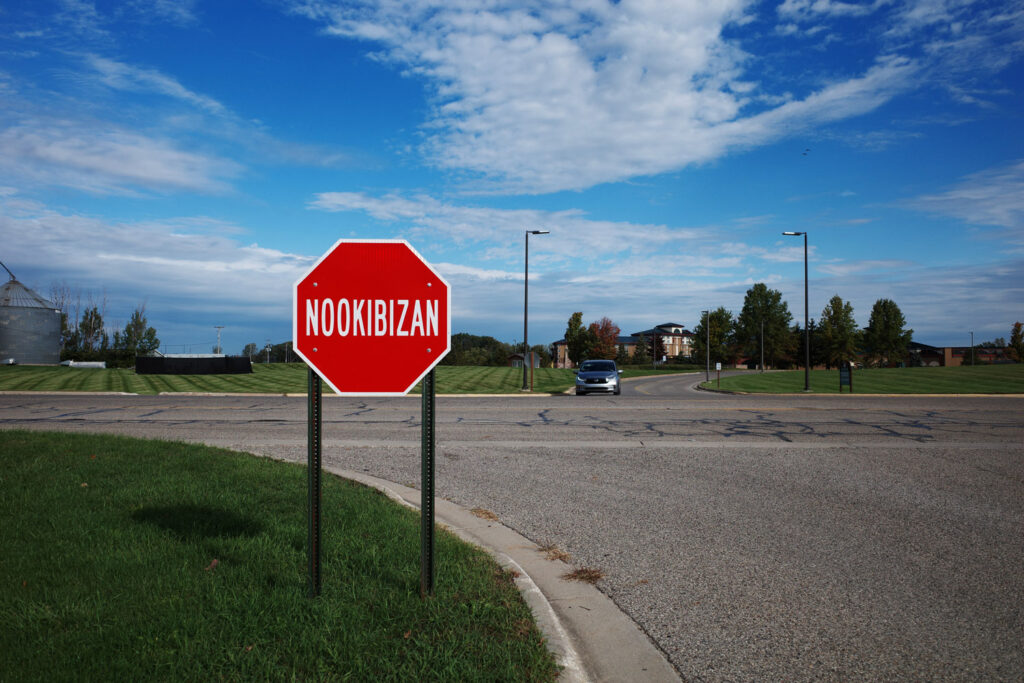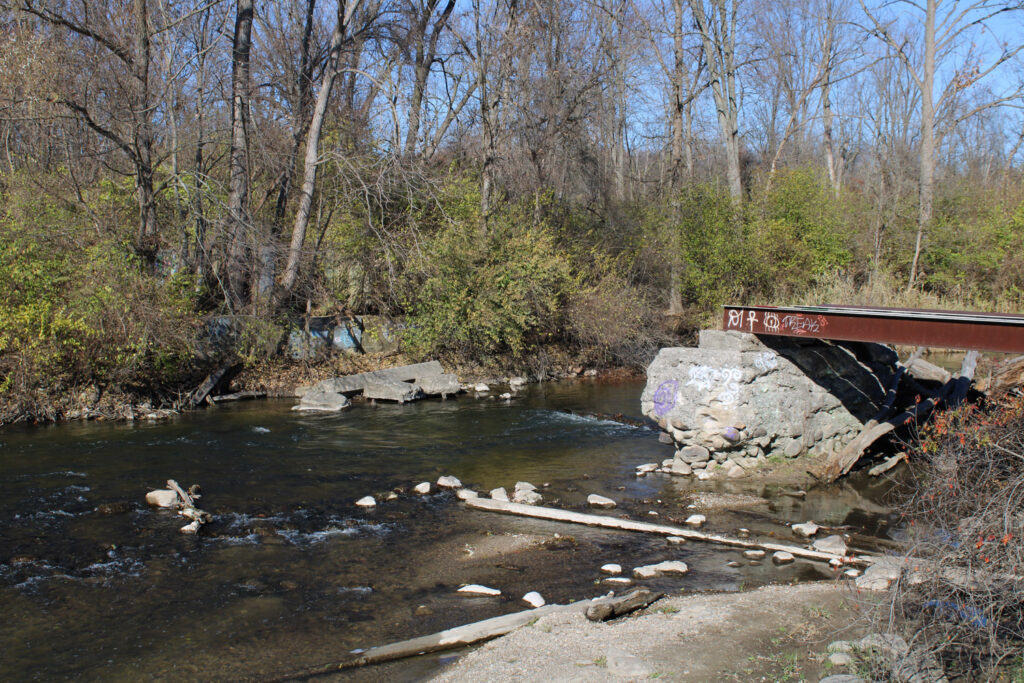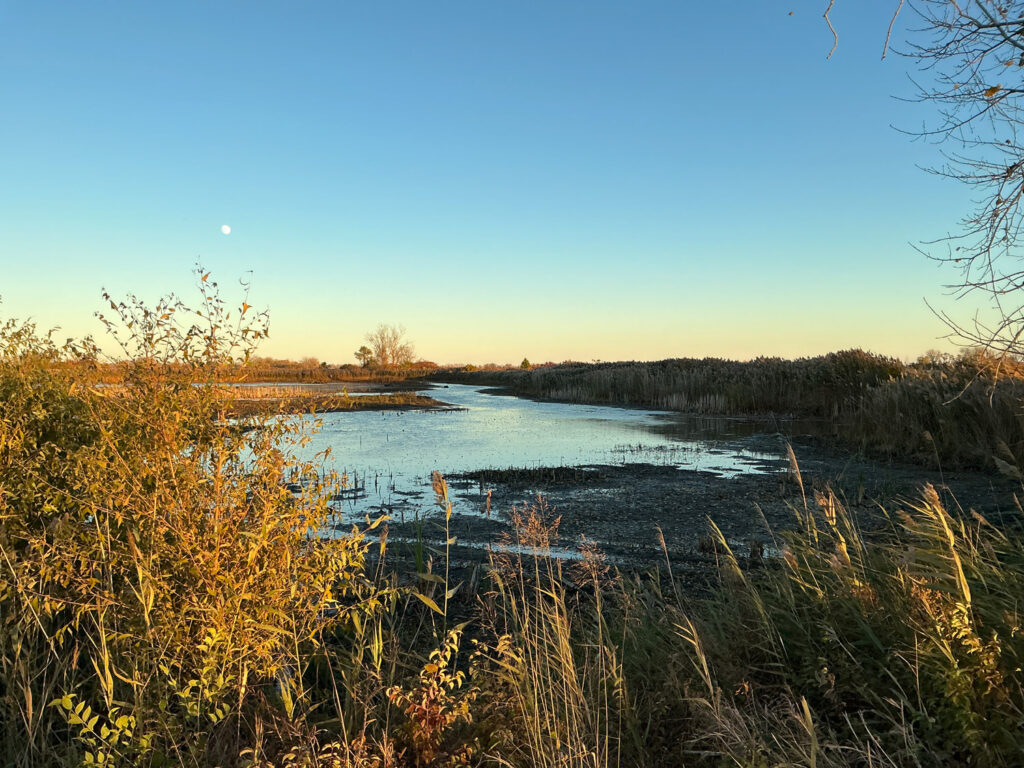Mt. Pleasant — Driving north on Mission Street in Mt. Pleasant, there’s a sign in front of a Popeye’s that welcomes you to the Isabella Indian Reservation. Ishkonganing Bendige-ing is painted in white against a brown background. You are now on tribal land.
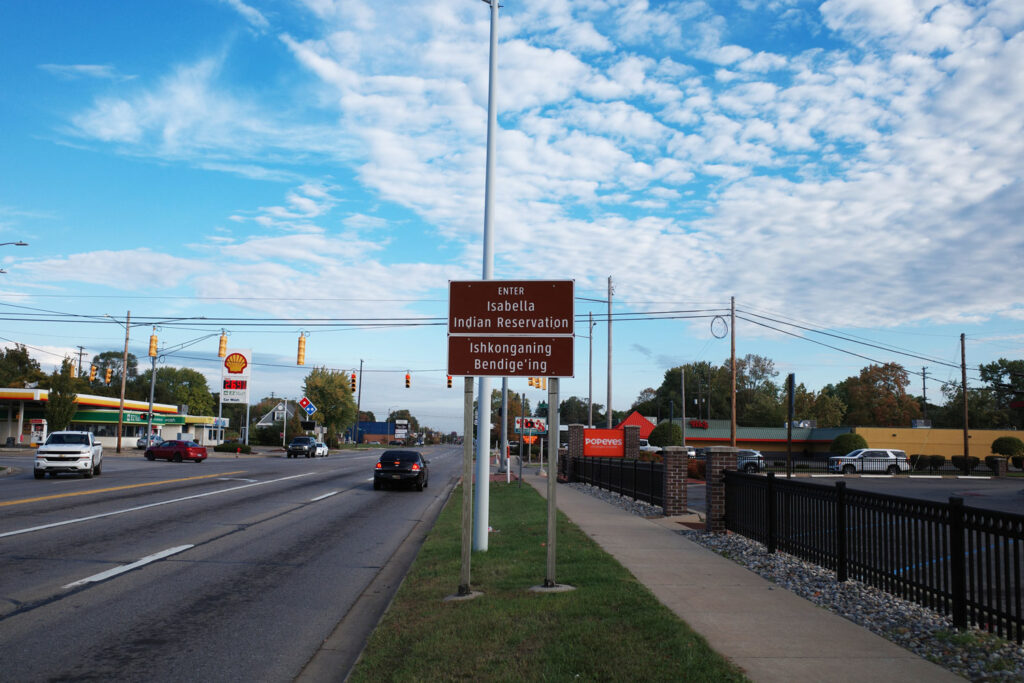
A few blocks away is downtown Mt. Pleasant (population of 8,741). It’s officially part of the reservation (population of 26,274). It would only be logical to assume that the downtown would thusly be visibly Indian in some sort of way. How? I’m not sure. I wouldn’t expect headdresses and traditional Indian music, but perhaps some sort of abstract Indian vibe. But there isn’t really.
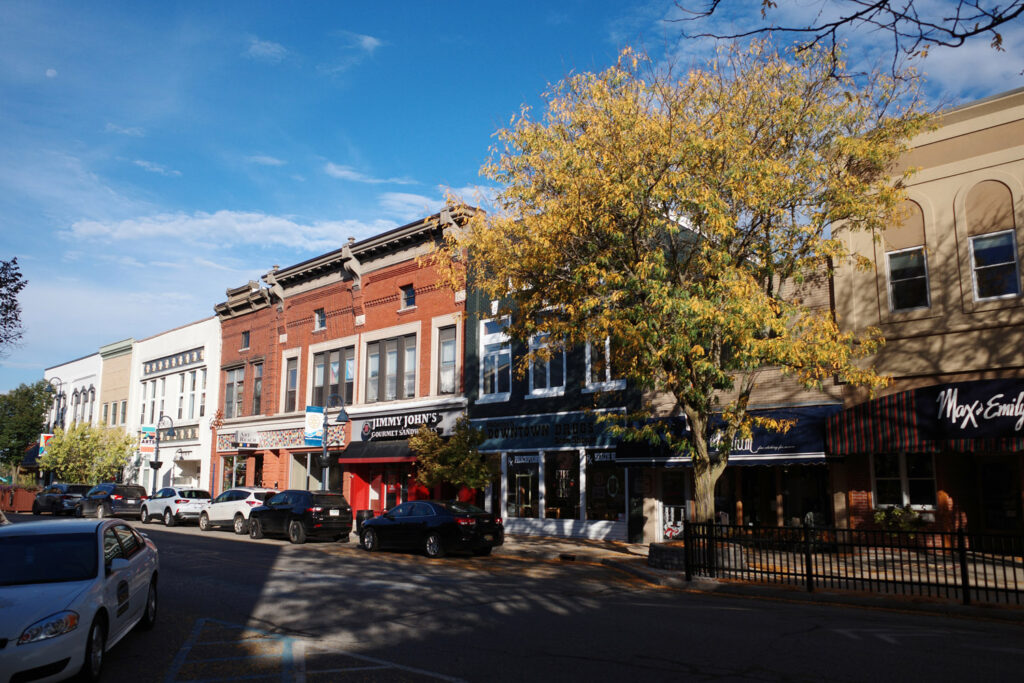
The streets downtown look like any other kind of street. The houses too. The names are the kinds of names you might find in any town in America. The stores and shops are all the typical kind of college town places that might as well be in Kalamazoo, Lansing, or Ann Arbor. Downtown Mt. Pleasant may be zoned Indian, but it’s just more of the same.
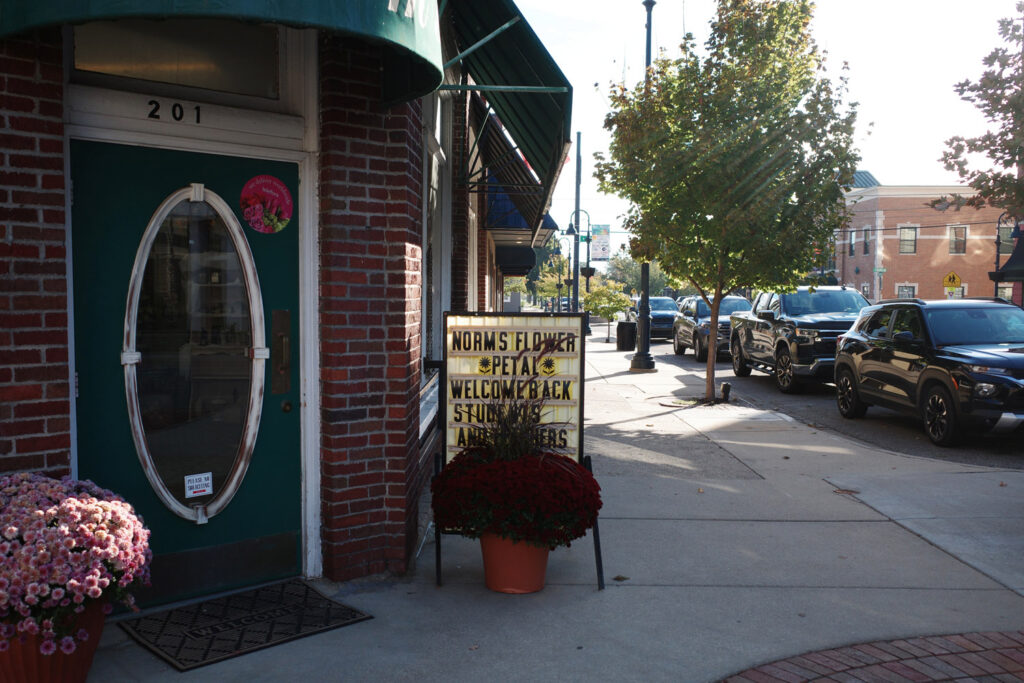
A little outside of town, across from Soaring Eagle Casino, is the Ziibiwing Center. It’s primarily a museum focused on the history, culture, and ways of the local Indian population. It’s a nice museum. The displays are well done, the layout is logical, and the information is presented in a thoughtful way. I, a paleface, learned a few things myself about the journey the Indians took to get here to Michigan, the various prophecies that came over the generations, and the way the modern Chippewas understand their identity in the modern world. There are two stop signs on either side of the road leaving Ziibiwing Center. One reads STOP; the other reads NOOKIBIZAN. Very Indian.
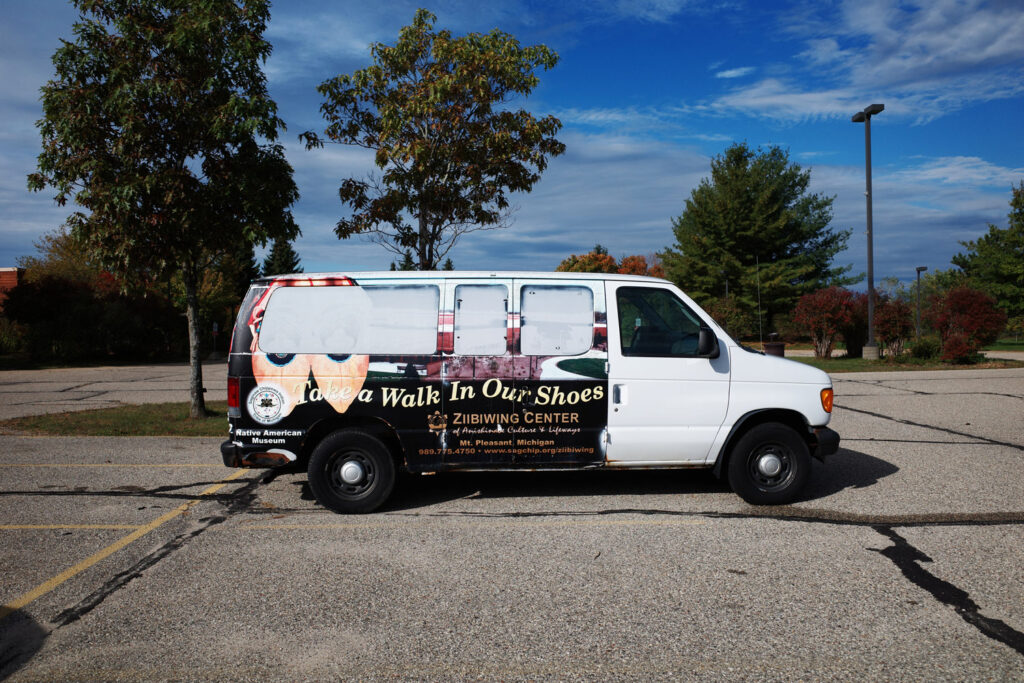
Further out in the country, deeper into the Isabella Reservation, is Rosebush. Leaving the little downtown, which amounts to no more than a little collection of streets without a single stoplight, you pass the Ojibwa Baptist Mission. An old white church with a slanted blue roof; an American flag hangs from an electrical pole in front.
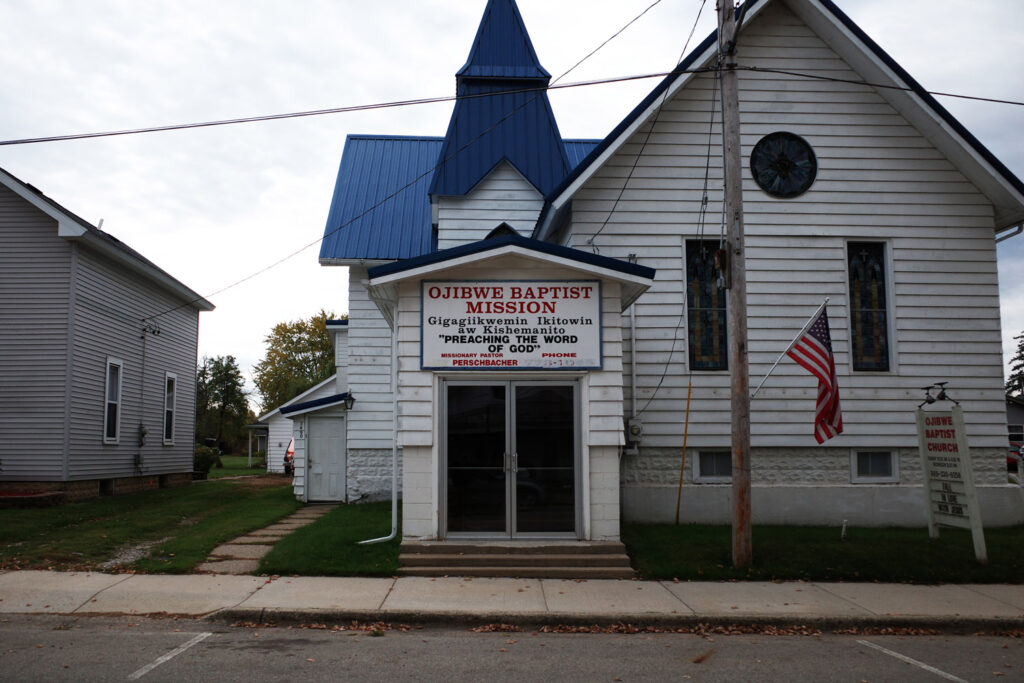
A long sign above the door reads:
Ojibwe Baptist Mission
Gigagiikwemin Ikitowin aw Kishemanito
“Preaching the Word of God”
Missionary Pastor
Perschbacher
As soon as Rosebush ends, farmland begins. The road turns from pavement to dirt. Cows, corn, and John Deere tractors rolling over long brown fields. Every mile or so a simple well-kept house stands about 50 feet from the road. Windmills litter the horizon. On West Denver Road, surrounded by farmland, framed by sparse tall trees, is a little patch of grass and a few old graves. Here, in the middle of the country, is an old Indian cemetery, established in 1892, once known as Redman Cemetery, but today called Nottawa Indian Cemetery.
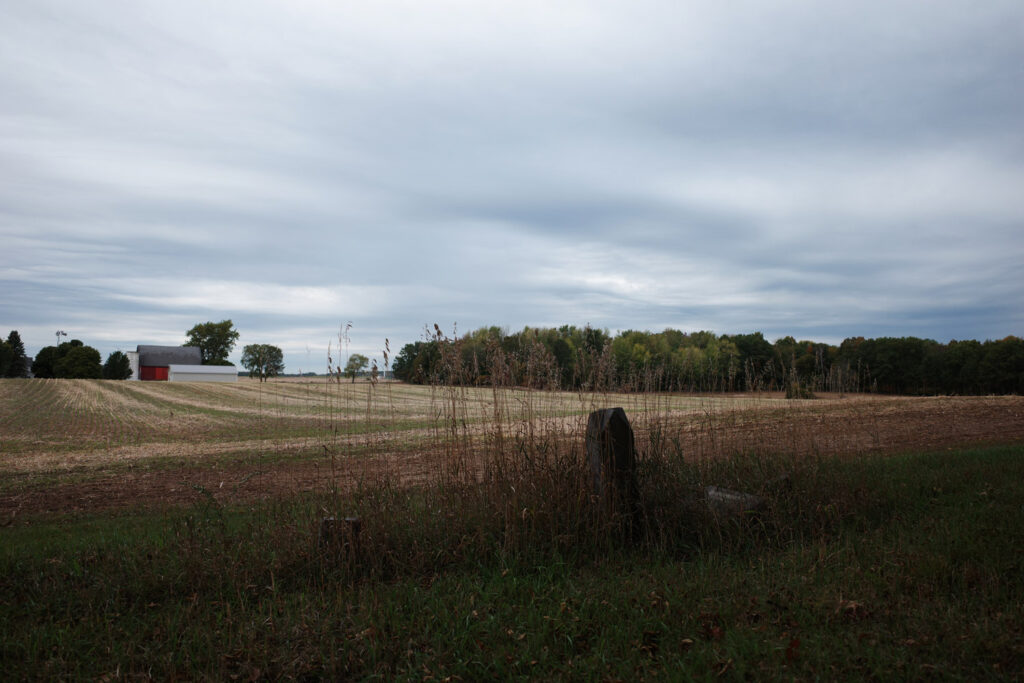
The graves are mostly very old. Some names and dates are being slowly worn away by the elements. Others are now mostly craggy rock. There’s a nice sign in the front and no fence around the parameter. A tall gravestone, surrounded by tall browning grass avoided by a lawnmower, stands just a few feet from turned over soil and endless farmland. It’s unceremonious. It’s stark. It’s lonely. It’s quiet. It’s peaceful. It’s windy. It’s thought provoking. It’s exactly as an old cemetery ought to be. The old Redman Cemetery, in all its plain quietude, is perhaps most strikingly Indian.
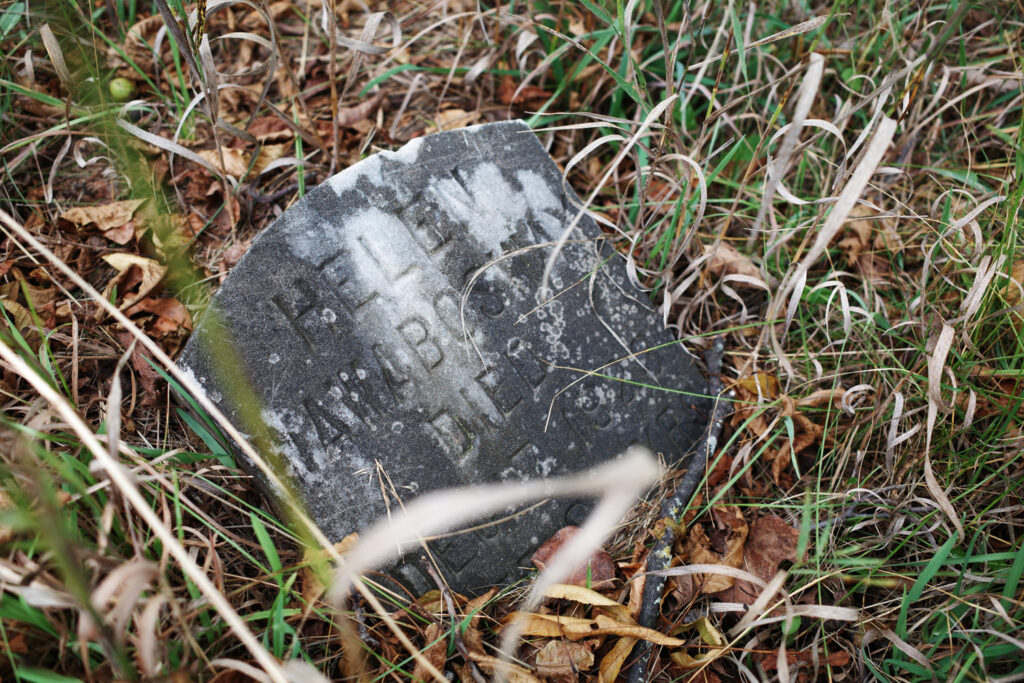
In some ways, Mt. Pleasant and the surrounding area are very Indian, and in some ways it isn’t Indian at all. There are technical legal designations which make it decidedly Indian on paper, and then cultural influences that make reality not Indian at all. And then it’s the other way around too. Central Michigan University’s mascot are the Chippewas. “FIRE UP CHIPS!” reads a huge billboard just outside the football stadium. Washington Street takes you straight toward campus.
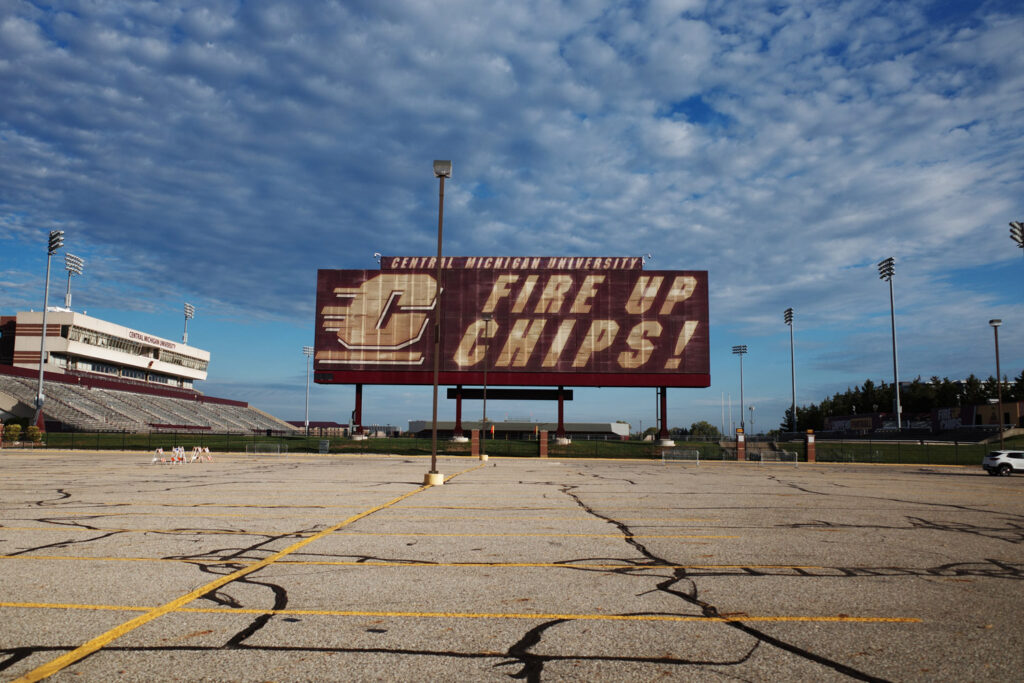
But what about the people here? According to the 2010 census, 2,414 people of Indian descent were living in the Mt. Pleasant area. Of course, you can tell. It’s on the faces. The eyes, the foreheads, the noses, the cheeks, and the hair. Just like you can see the Indian lineage on some of the faces way up north in Sault Ste. Marie, you can in Mt. Pleasant too. Sometimes it’s faint, but it’s there. Yes, this is a metaphor.
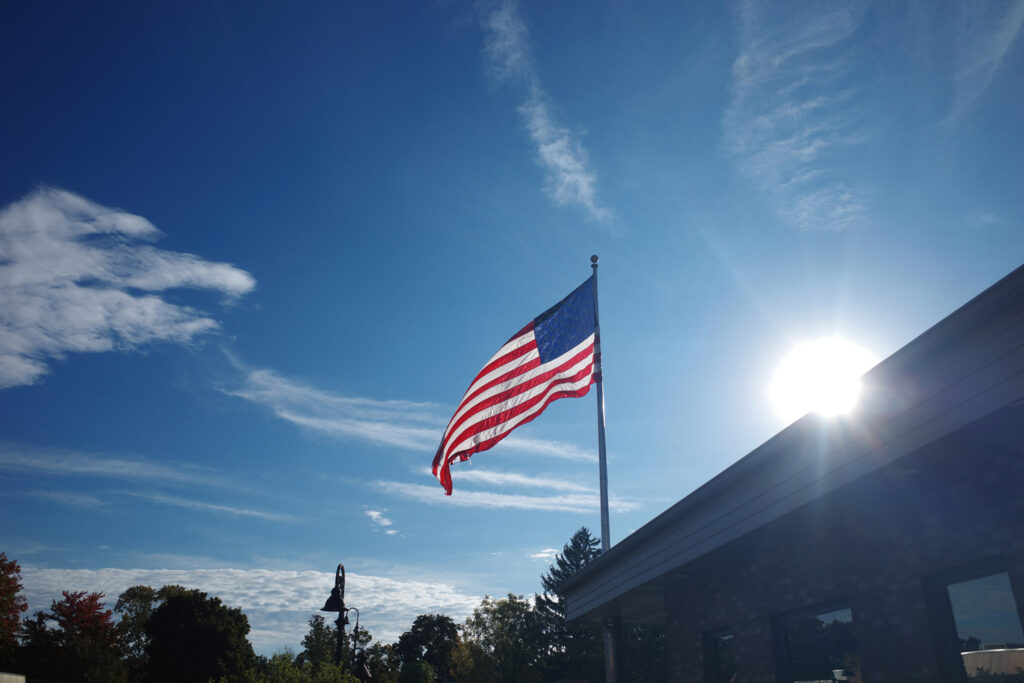
Mt. Pleasant is complicated. The American story is complicated. American identity is complicated. Part of becoming a new world-er, and a modern—they are the same thing—is accepting the bare inescapable fact that things are complicated. It’s a process, and an ordeal. There isn’t much room for purity and its concerns on the frontier.
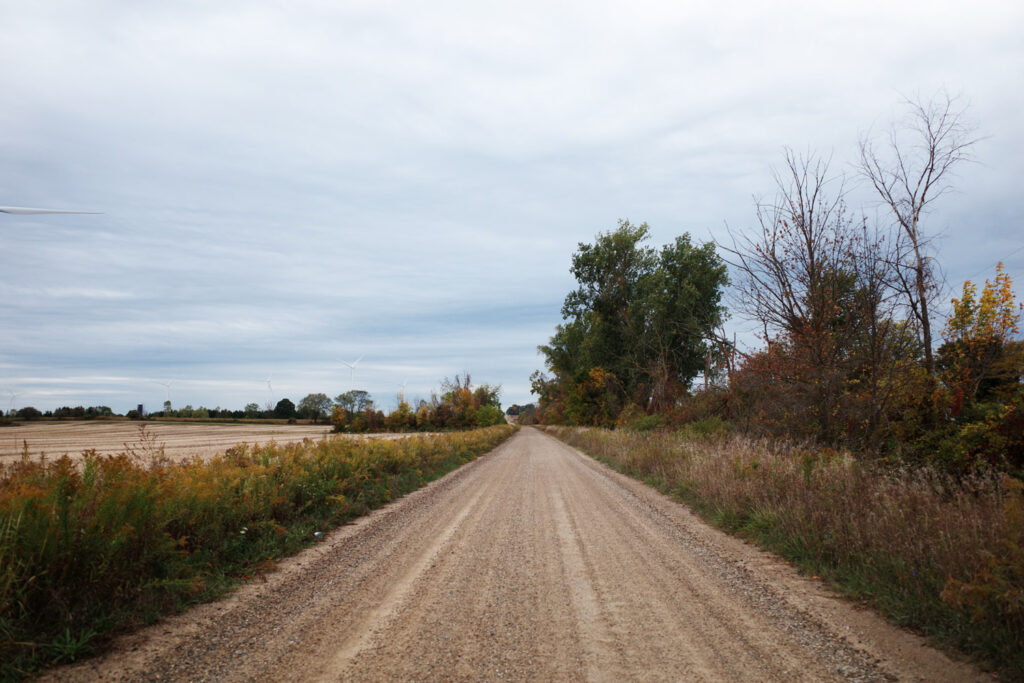
Places change and so do people. People intertwine whether they like it or not, and so do their stories. Some bits are lost and others remain. What comes out on the other end is often a mix of both, or many and, we can rarely predict what the result might be. But whatever comes is something new, or something fused. Something modern, something American. There’s the Ojibwe Baptist Mission in Rosebush, the Central Michigan University Chippewas, uber-preppy lacrosse, and the military’s Apache Helicopter.
It’s complicated.
O.W. Root is a writer based in Northern Michigan, with a focus on nature, food, style, and culture. Follow him on X @OW_Root.
